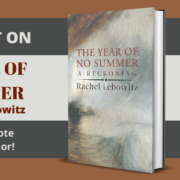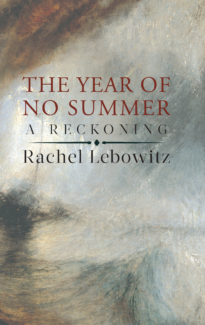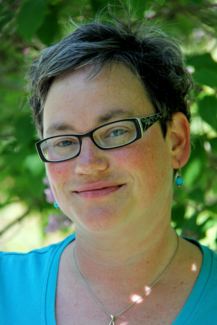Spotlight On: THE YEAR OF NO SUMMER by RACHEL LEBOWITZ
With a new month comes another addition to the Biblioasis Spotlight series! For May, we’re weaving through time and place, and history and memory in Rachel Lebowitz’s haunting collection of essays, The Year of No Summer.
“Darkly fascinating…Lebowitz highlights the parables, fables and myths we humans created in order to weave meaning into our lives and to which we return for comfort.” —Atlantic Books Today
On April 10th, 1815, Indonesia’s Mount Tambora erupted. The resulting build-up of ash in the stratosphere altered weather patterns and led, in 1816, to a year without summer. Instead, there were June snowstorms, food shortages, epidemics, inventions, and the proliferation of new cults and religious revivals.
Hauntingly meaningful in today’s climate crisis, Lebowitz’s lyric essay charts the events and effects of that apocalyptic year. Weaving together history, mythology, and memoir, The Year of No Summer ruminates on weather, war, and our search for God and meaning in times of disaster.
Rachel Lebowitz is the author of Hannus (Pedlar Press, 2006), which was shortlisted for the 2007 Roderick Haig-Brown Regional Prize (BC Book Prize) and the Edna Staebler Award for Creative Non-Fiction. She is also the author of Cottonopolis (Pedlar Press, 2013) and the co-author, with Zachariah Wells, of the children’s picture book Anything But Hank! (Biblioasis, 2008, illustrated by Eric Orchard). She lives in Halifax, where she coordinates adult tutoring programs at her neighbourhood library.
Get your copy of The Year of No Summer here!
A NOTE FROM THE AUTHOR
What does it mean to be human?
“What are you writing these days?” In Fall 2019, I took a leave of absence from one of my day jobs, so I could have time to figure out where I needed to go. I was taking a “writing leave,” I told people, but that of course was a mistake, because the expectation from all of us was that I would write, and then not doing so felt like a failure. We need to give permission for writing to encompass walking and thinking and reading and sitting with a mug of tea, watching the crows. As Rebecca Solnit puts it, “Remember, writing is not typing.”
I walked, I thought, I noticed birds and the sound of the wind. I thought about how noticing is an honouring. And I read. I read and read and put sticky notes in books and then typed them up into my ever-growing notes file, and then, five months later, just when I thought maybe I’m ready to write, the pandemic hit, and I homeschooled my kid and read escapist fiction instead because my brain stopped being able to process anything. Then my leave ended and I went back to working almost full-time in a pandemic, which meant moving from online to in-person to online to in-person, and that’s how it’s been for two years. I have written bits and pieces in that time, but nothing that coheres.
Lately, however, I’ve been obsessively thinking about this book-to-be which is always a good sign. So what am I working on these days? Like many artists, I am trying to make sense of the world. With this climate emergency, I asked myself, “How did we get here?” I asked a question that started with The Year of No Summer: “What does it mean to be human?” I wasn’t done with this question and I wasn’t done with fairytales, either. So, from these has come a grappling. I am using the ancient Greek idea of the elements: Earth, Air, Fire, Water and linking each with specific fairytales (some of our oldest stories). I am writing—or thinking out—essays that use as a jumping off point a fairytale to then delve deeper into humans and our relationship with the natural world, moving from the Neolithic Revolution to 19th Century mariners. Lately, I have read about the California and Klondike gold rushes, the history of spinning, and the Middle Ages. I am a frail thing, watching the crows in the trees, and the tide coming in.




